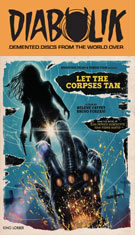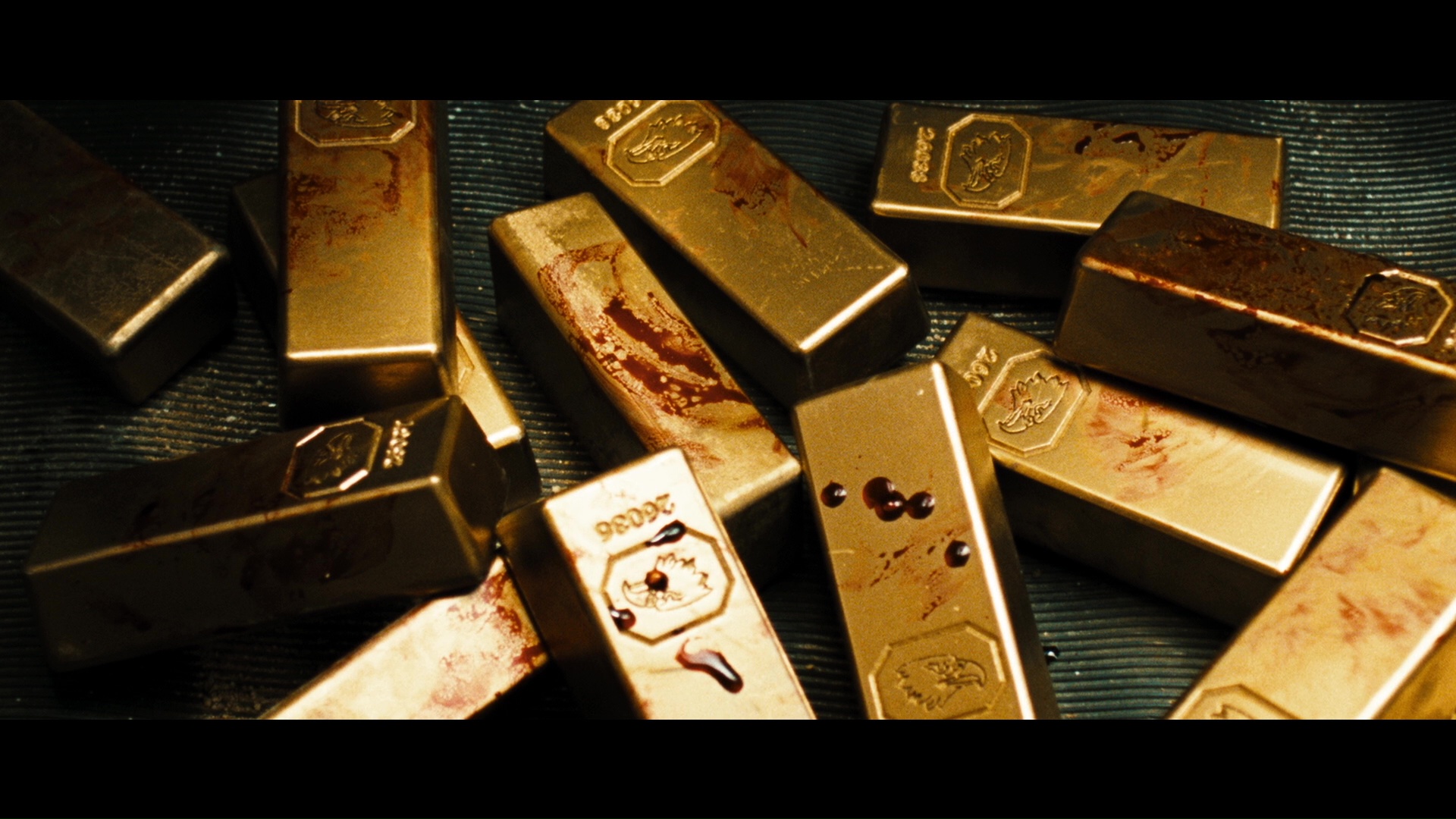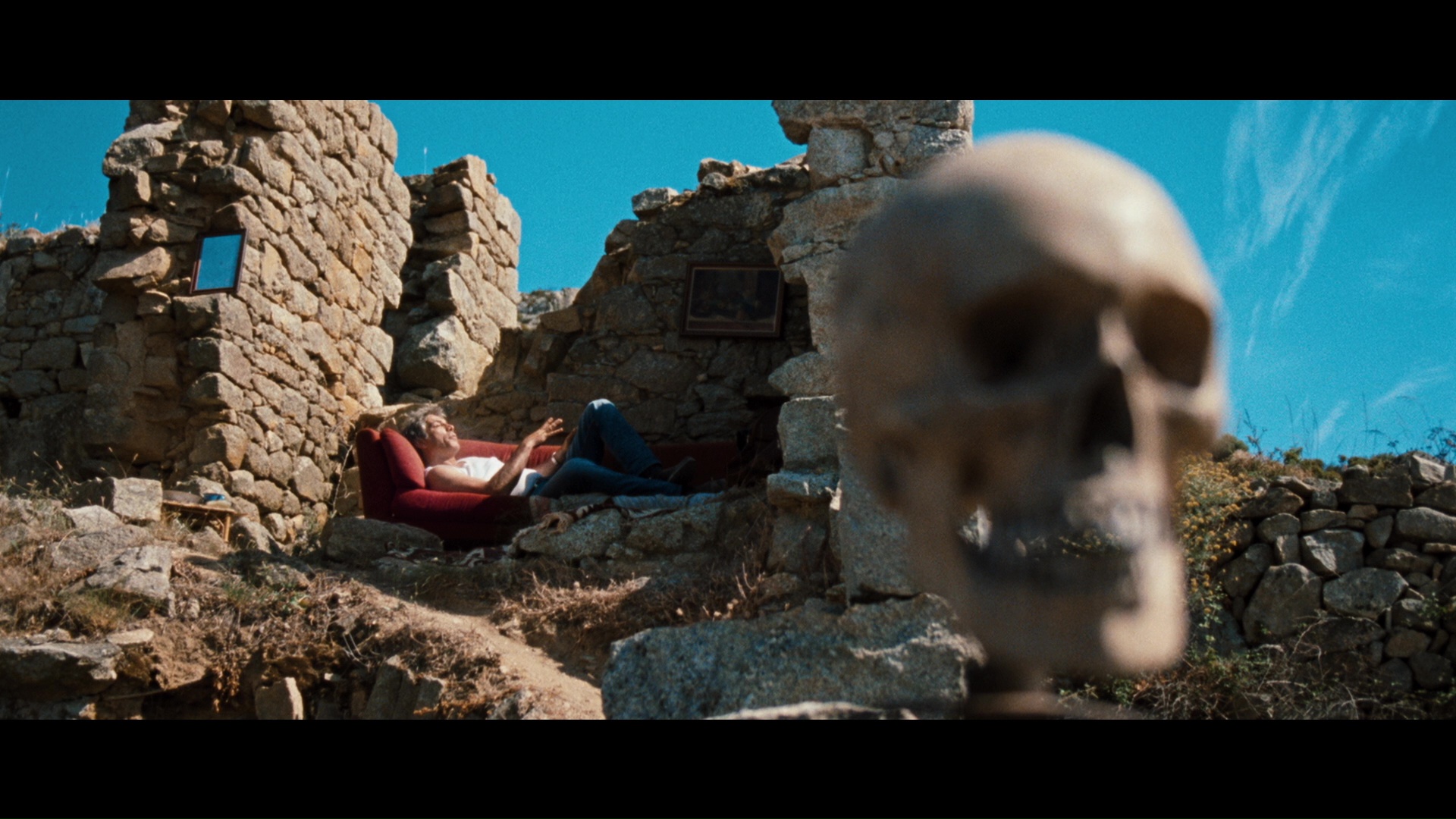

Color, 2017, 92 mins. 14 secs..
Directed by Hélène Cattet and Bruno Forzani
Starring Elina Löwensohn, Stéphane Ferrara, Bernie Bonvoisin, Michelangelo Marchese, Marc Barbé
Kino Lorber (Blu-ray & DVD) (US RA/R1 HD/NTSC), Le Chat Qui Fume (Blu-ray & DVD) (France RB/R2 HD/PAL) / WS (2.35:1) (16:9)
 playing around with the images and music of
playing around with the images and music of  Italian horror and gialli with Amer and The Strange Color of Your Body's Tears, the duo of Hélène Cattet and Bruno Forzani return with their third visually intoxicating mosaic -- but this time indebted to European crime thrillers and westerns. Whether their films are really snappy screen savers or incisive works of deconstruction still seems up for debate, but they're certainly unique and qualify as an event each time one opens. There's also a bit more narrative than usual since this one's based on a novel by Jean-Patrick Manchette and Jean-Pierre Bastid, though it's still more focused on style than exploitation value.
Italian horror and gialli with Amer and The Strange Color of Your Body's Tears, the duo of Hélène Cattet and Bruno Forzani return with their third visually intoxicating mosaic -- but this time indebted to European crime thrillers and westerns. Whether their films are really snappy screen savers or incisive works of deconstruction still seems up for debate, but they're certainly unique and qualify as an event each time one opens. There's also a bit more narrative than usual since this one's based on a novel by Jean-Patrick Manchette and Jean-Pierre Bastid, though it's still more focused on style than exploitation value.  champagne lactation sequence not easily forgotten.
champagne lactation sequence not easily forgotten. 
 track from The Road to Salina (heard earlier to more spare and powerful effect in Kill Bill Vol. 2) getting driven into the ground here over and over.
track from The Road to Salina (heard earlier to more spare and powerful effect in Kill Bill Vol. 2) getting driven into the ground here over and over.  ravishing home theater experience, Let the Corpses Tan (a flat translation of the more lyrical French title, Laissez bronzer les cadavres) first came to Blu-ray and DVD in France as a three-disc Blu-ray/DVD combo featuring English subtitles for the main feature and bonus features including interviews with Löwensohn, Dominique Troyes, Bernie Bonvoisin, Stéphane Ferrara, Jean-Pierre Bastid and Doug Headline, as well as the short films “O Is For Orgasm” and “Santos Palace” and a teaser and trailer. The American release from Kino Lorber offers the French track in DTS-HD MA 5.1 or 2.0 options (the 5.1 is really punchy and fun) with English subtitles. As you'd expect it looks absolutely gorgeous with a riot of blazing colors in almost every scene (the robbery title sequence could burn your screen up) and numerous striking, highly detailed landscape shots. The U.S. trailer is included along with an audio commentary with Alexandra Heller-Nicholas and John Edmond, who mostly talk about how they love everything in the film and every shot is gorgeous. There's also a quick, vicious dis at Quentin Tarantino that feels particularly odd in the context of this film. They're certainly enthusiastic though and have some good material about meeting the filmmakers who answered some questions about the origins of some of the more outré visual ideas.
ravishing home theater experience, Let the Corpses Tan (a flat translation of the more lyrical French title, Laissez bronzer les cadavres) first came to Blu-ray and DVD in France as a three-disc Blu-ray/DVD combo featuring English subtitles for the main feature and bonus features including interviews with Löwensohn, Dominique Troyes, Bernie Bonvoisin, Stéphane Ferrara, Jean-Pierre Bastid and Doug Headline, as well as the short films “O Is For Orgasm” and “Santos Palace” and a teaser and trailer. The American release from Kino Lorber offers the French track in DTS-HD MA 5.1 or 2.0 options (the 5.1 is really punchy and fun) with English subtitles. As you'd expect it looks absolutely gorgeous with a riot of blazing colors in almost every scene (the robbery title sequence could burn your screen up) and numerous striking, highly detailed landscape shots. The U.S. trailer is included along with an audio commentary with Alexandra Heller-Nicholas and John Edmond, who mostly talk about how they love everything in the film and every shot is gorgeous. There's also a quick, vicious dis at Quentin Tarantino that feels particularly odd in the context of this film. They're certainly enthusiastic though and have some good material about meeting the filmmakers who answered some questions about the origins of some of the more outré visual ideas. 



